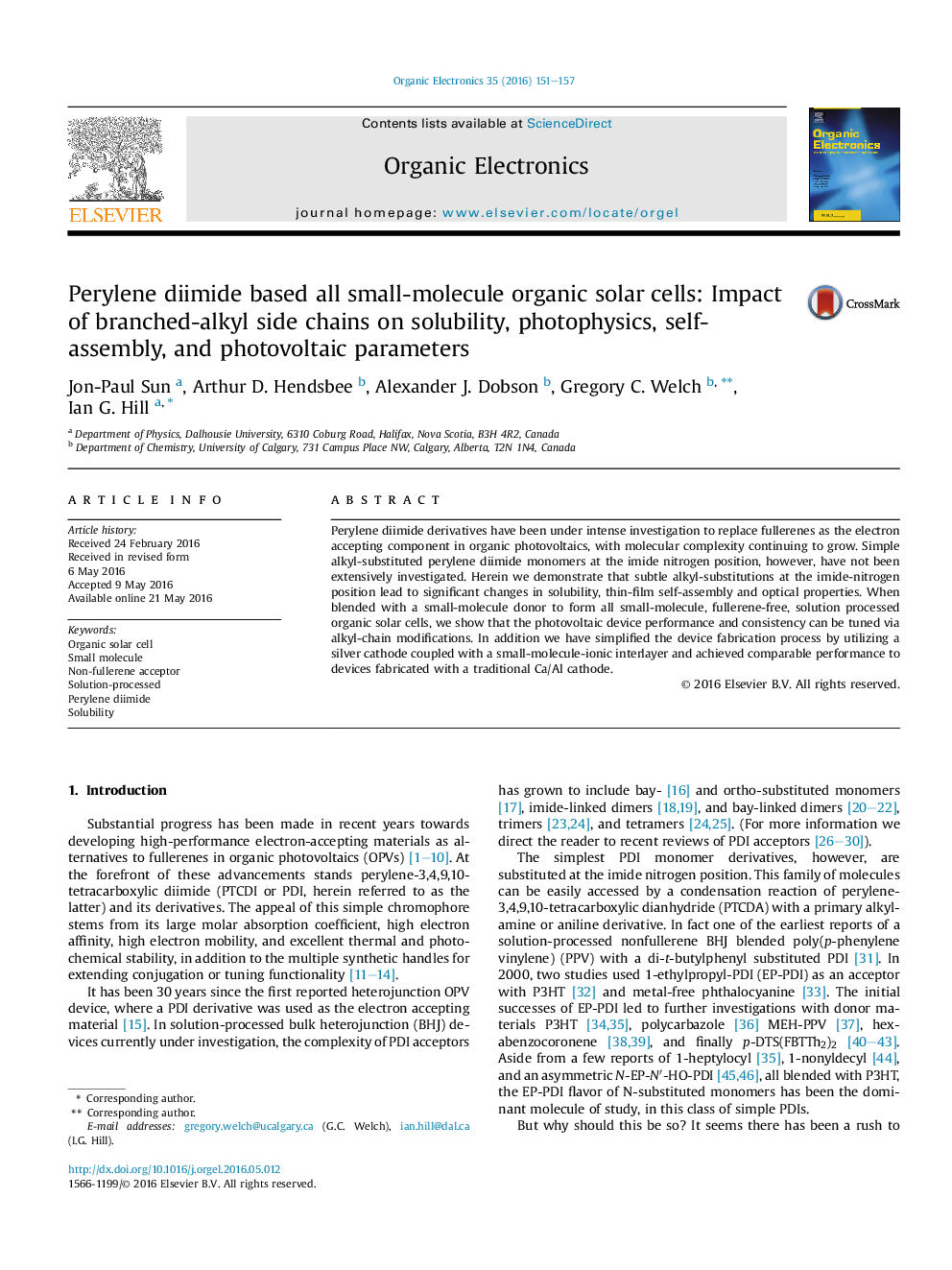| Article ID | Journal | Published Year | Pages | File Type |
|---|---|---|---|---|
| 1266814 | Organic Electronics | 2016 | 7 Pages |
•Interplay of alkyl-chain branching point and sterics modulate π-π interactions.•Solubility and crystalline properties manifest in thin-film homogeneity.•Photovoltaic device consistency relies on homogeneous film formation.
Perylene diimide derivatives have been under intense investigation to replace fullerenes as the electron accepting component in organic photovoltaics, with molecular complexity continuing to grow. Simple alkyl-substituted perylene diimide monomers at the imide nitrogen position, however, have not been extensively investigated. Herein we demonstrate that subtle alkyl-substitutions at the imide-nitrogen position lead to significant changes in solubility, thin-film self-assembly and optical properties. When blended with a small-molecule donor to form all small-molecule, fullerene-free, solution processed organic solar cells, we show that the photovoltaic device performance and consistency can be tuned via alkyl-chain modifications. In addition we have simplified the device fabrication process by utilizing a silver cathode coupled with a small-molecule-ionic interlayer and achieved comparable performance to devices fabricated with a traditional Ca/Al cathode.
Graphical abstractFigure optionsDownload full-size imageDownload as PowerPoint slide
